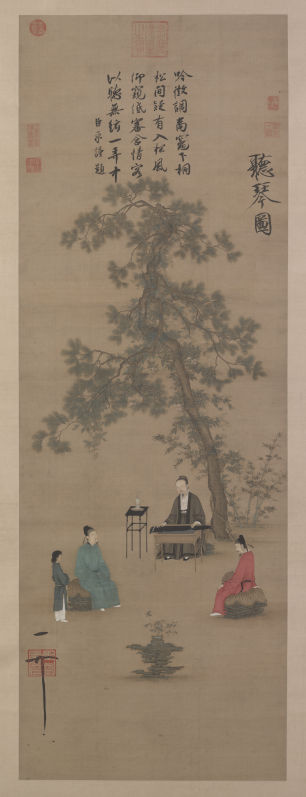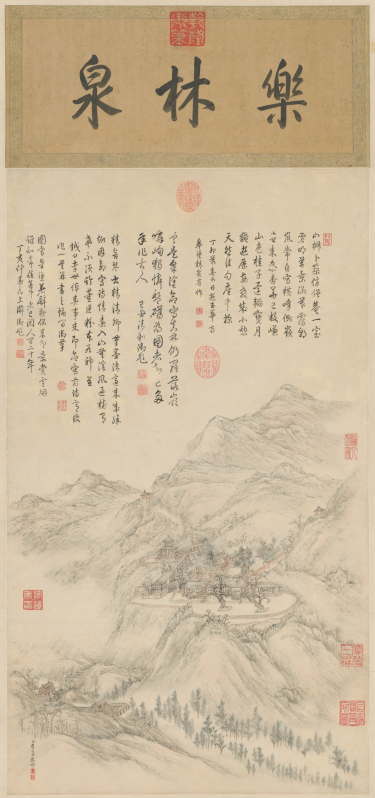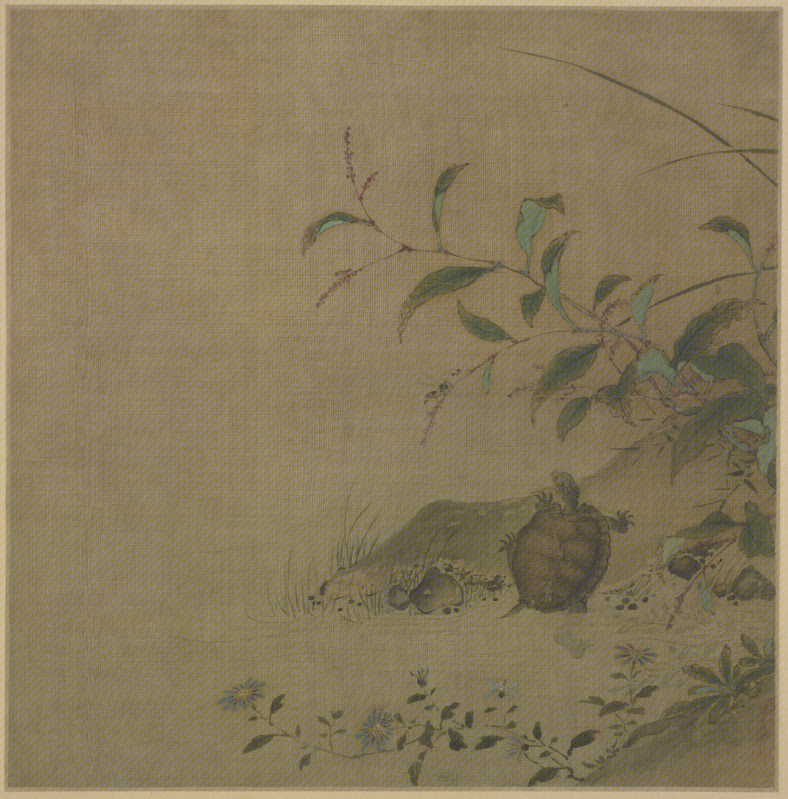
赵佶听琴图轴
Category:
Paintings
Period:
Song dynasty
Author:
赵佶
This painting depicts a scene in which officials and patricians assemble and enjoy the performance of a qin zither. Using the sound of the zither as his theme, the artist delicately presents the musical effect of using silence to overwhelm sound. The background is simple, while luxuriant pines and swaying bamboo create elegant surroundings. Incense spirals upward from a burner on the table, and an ancient tripod rests upon eccentric rockery from which exotic flowers grow. The elegant sound of the instrument completes the scene.
The upper part of the painting displays a septasyllabic quatrain by Cai Jing, the powerful grand councilor of the Northern Song Dynasty (960-1127). The title of the painting appears on the upper right as Listening to a Zither in three characters (Tingqin tu) written in the slender gold script (shoujin). These characters were inscribed by Zhao Ji, also known as Huizong (r. 1100-1126)—the last emperor of the Northern Song. The composition of the painting is simple, while the figures are shown in a vivid characterization in both their postures and appearance. The painting shows bold lines and rich, elegant colors. The trees, stones, and various objects are presented in a tidy fashion that is free of stiffness. All of these qualities establish this work as a quintessential piece of court figure-paintings of the Song dynasty. Because of the title and signature inscribed by Zhao Ji, scholars once believed his hand also accomplished the painting. However, according to textual research, it is now thought that the work was composed by a painter serving in the imperial academy of painting and that the musician in the picture is, in fact, Zhao Ji.
Show All Details
Show Fewer Details
Suggest Feedback








